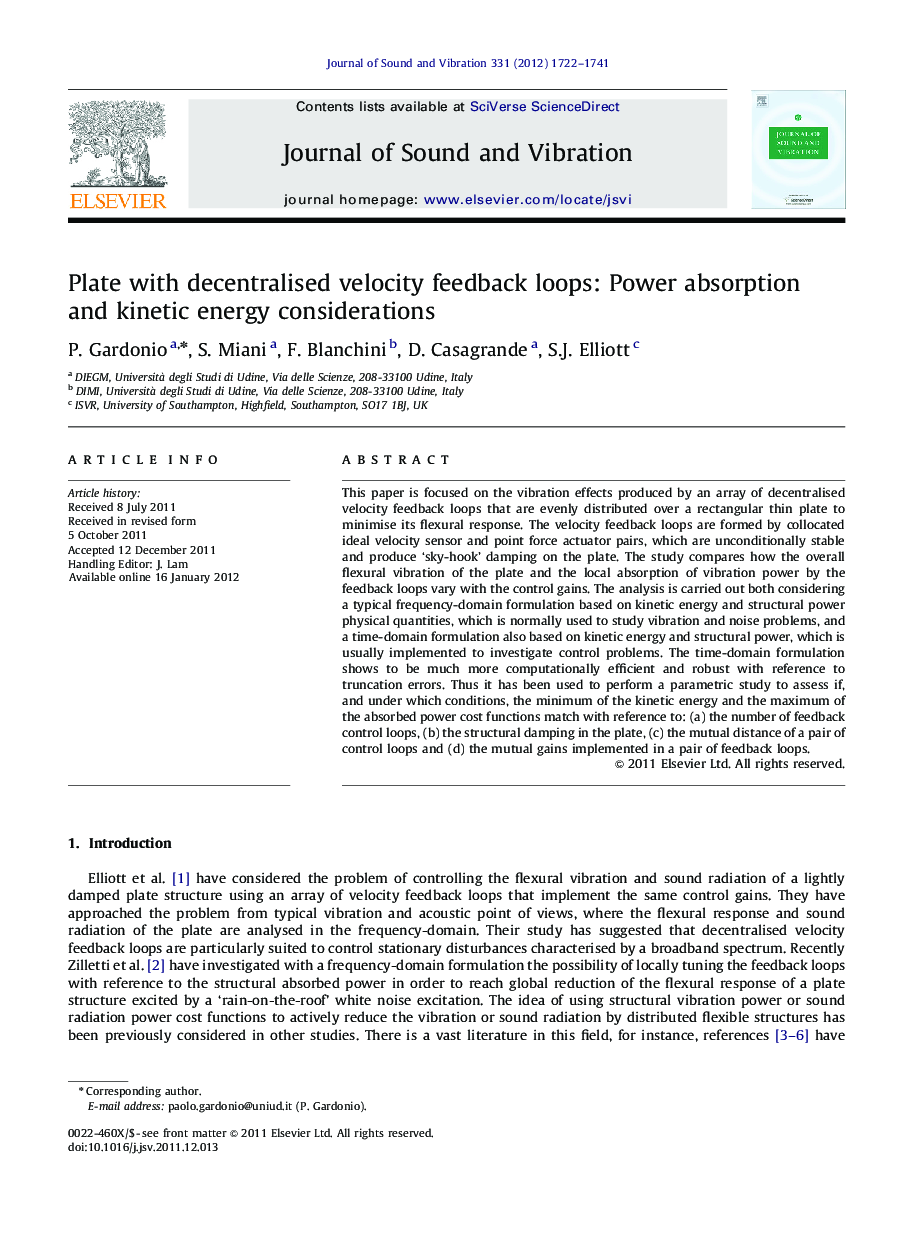| Article ID | Journal | Published Year | Pages | File Type |
|---|---|---|---|---|
| 288522 | Journal of Sound and Vibration | 2012 | 20 Pages |
This paper is focused on the vibration effects produced by an array of decentralised velocity feedback loops that are evenly distributed over a rectangular thin plate to minimise its flexural response. The velocity feedback loops are formed by collocated ideal velocity sensor and point force actuator pairs, which are unconditionally stable and produce ‘sky-hook’ damping on the plate. The study compares how the overall flexural vibration of the plate and the local absorption of vibration power by the feedback loops vary with the control gains. The analysis is carried out both considering a typical frequency-domain formulation based on kinetic energy and structural power physical quantities, which is normally used to study vibration and noise problems, and a time-domain formulation also based on kinetic energy and structural power, which is usually implemented to investigate control problems. The time-domain formulation shows to be much more computationally efficient and robust with reference to truncation errors. Thus it has been used to perform a parametric study to assess if, and under which conditions, the minimum of the kinetic energy and the maximum of the absorbed power cost functions match with reference to: (a) the number of feedback control loops, (b) the structural damping in the plate, (c) the mutual distance of a pair of control loops and (d) the mutual gains implemented in a pair of feedback loops.
► We compare kinetic energy/power absorption cost functions for decentralised feedback. ► We present frequency-domain and time-domain formulations for the control problem. ► We show computational advantages and robustness of time-domain formulation. ► We demonstrate close similarity of two cost functions for a wide range of parameters. ► We show that same gain tuning can be implemented in decentralised feedback loops.
